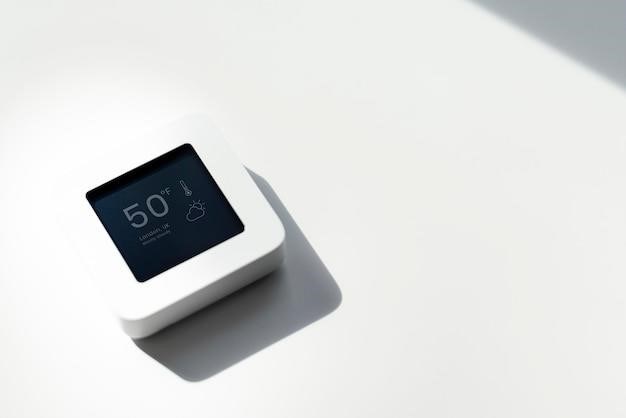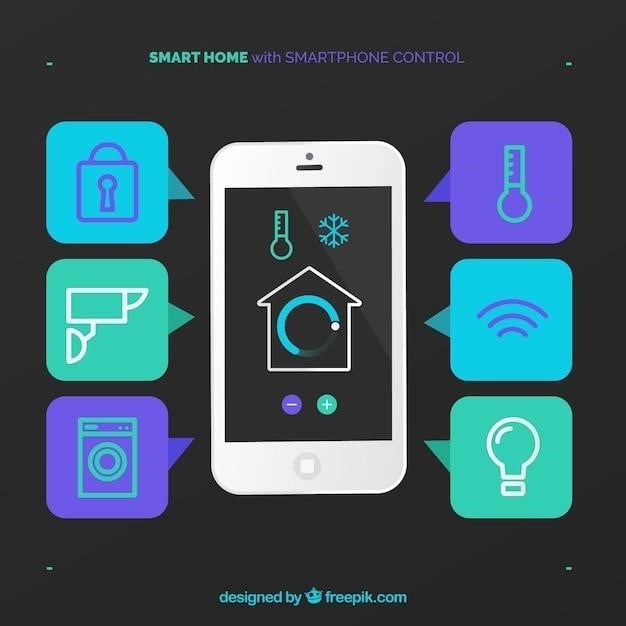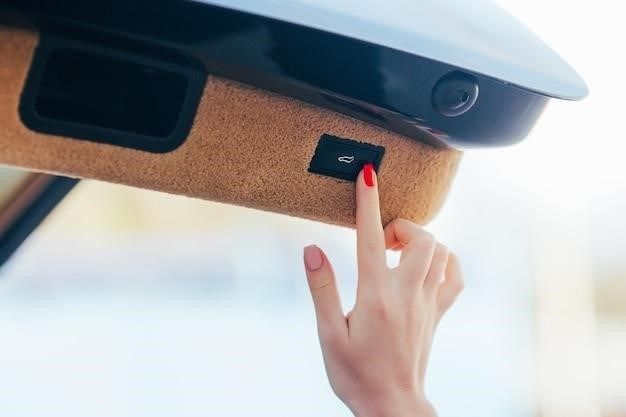Dometic 3-Button Thermostat⁚ Troubleshooting Common Issues
Experiencing problems with your Dometic 3-button thermostat? Consult your manual’s troubleshooting section. Check for thermostat failure; power and connections are crucial. A reset might resolve minor issues; otherwise, replacement may be necessary;
Identifying Thermostat Failure
A malfunctioning Dometic 3-button thermostat can manifest in several ways. If the display shows nothing or shows erratic readings, the unit itself might be faulty. Inconsistent temperature control, where the RV fails to reach or maintain the set temperature, despite seemingly correct settings, strongly suggests a problem with the thermostat. Inability to switch between heating and cooling modes, or unresponsive buttons, also point towards a hardware failure within the thermostat. Before assuming a more complex issue, carefully examine the thermostat for obvious signs of damage, loose connections, or any visible defects. Refer to your Dometic manual for specific error codes that might indicate internal problems.
Checking Power and Connections
Before replacing your Dometic 3-button thermostat, verify power supply and connections. Ensure the thermostat is receiving power; check the circuit breaker or fuse related to the unit’s power supply. A tripped breaker or blown fuse can prevent the thermostat from functioning correctly. Loose wiring connections at the thermostat’s terminals are another common issue. Carefully inspect all wiring connections for security and proper seating. If necessary, carefully remove and re-seat each wire, ensuring a snug connection. A multimeter can help verify power is reaching the thermostat. If power is confirmed but the thermostat remains unresponsive, the problem likely lies within the thermostat itself, necessitating repair or replacement.
Resetting the Thermostat
A simple reset often resolves minor glitches with your Dometic 3-button thermostat. Begin by turning the thermostat completely off. Locate the power switch (often a small button) and press it to turn off the power. Wait for at least 30 seconds to allow the system to fully power down; this is an important step to clear temporary faults. After the waiting period, turn the power back on. Observe the thermostat’s display to see if it responds normally. If the problem persists after this initial reset, consult your Dometic thermostat manual for specific instructions on a factory reset. A factory reset will return the thermostat to its default settings; be prepared to reprogram your desired temperature settings and preferences. If the problem is not solved by a reset, then more serious troubleshooting may be required.

Understanding Dometic Thermostat Models
Dometic offers various thermostat models, including single-zone LCD, Comfort Control Center 2 (CCC2), and Bluetooth capacitive touch options. Each model provides unique features and functionalities; consult the respective manuals for detailed operating instructions.
Single Zone LCD Thermostat (3313192 Series)
The Dometic 3313192 series single-zone LCD thermostat offers basic climate control. Its simple interface features buttons for power, mode selection (Cool, Heat, Fan), and temperature adjustment. The LCD screen displays the current temperature, selected mode, and fan speed. This model is often found in RVs and provides straightforward operation for controlling heating and cooling systems. Refer to the user manual for detailed instructions on programming, setting temperature preferences, and troubleshooting common issues. The manual also covers Fahrenheit/Celsius conversion and other operational features. Remember to always consult the specific manual for your model number (3313192, 3313193, or 3313194) as features may vary slightly.
Comfort Control Center 2 (CCC2) Thermostat
The Dometic Comfort Control Center 2 (CCC2) thermostat offers more advanced features than the single-zone models. This programmable thermostat allows for customized scheduling and temperature settings for multiple zones. The LCD display shows the current temperature, selected mode (Cool, Heat, Fan, Auto, Heat Pump, Heat Strip), zone, and fan speed. Buttons control temperature adjustments, mode selection, and fan speed. The CCC2 thermostat often includes features like a “program” button for scheduling and potentially error code displays for troubleshooting. Detailed instructions for programming, setting preferences, and resolving specific error codes are available in the complete user manual for the CCC2 thermostat. Consult this manual for optimal performance and to address any operational questions.
Bluetooth Capacitive Touch Thermostat (3316420 Series)
The Dometic 3316420 series Bluetooth capacitive touch thermostat represents a significant upgrade from earlier models. Its sleek, modern design features a touch screen interface for intuitive control. Beyond basic temperature and mode adjustments (Cool, Heat, Fan, Auto), this advanced thermostat utilizes Bluetooth connectivity. This allows for remote control and monitoring via a smartphone app (availability and specifics of the app may vary). The app might provide additional features like programmable scheduling, detailed system diagnostics, and potentially remote troubleshooting. The user manual accompanying the 3316420 series will contain complete setup instructions, app pairing procedures, and troubleshooting steps for both the physical thermostat and the associated smartphone application. Refer to this manual for comprehensive guidance.
Operating Instructions for Common Functions
Learn to adjust temperature, select modes (Cool, Heat, Fan), and control fan speed using your Dometic thermostat’s buttons. Consult your manual for specific button functions and sequences.
Temperature Adjustment
Modifying the temperature setting on your Dometic 3-button thermostat is typically achieved through dedicated up and down buttons. Pressing the “up” button increases the setpoint, while the “down” button decreases it. The display will show the current temperature setting. The range of adjustable temperatures varies depending on the specific Dometic model and the operational mode (heating or cooling). Always refer to your unit’s user manual for the precise temperature range and adjustment procedures. Incorrect temperature settings can impact system efficiency and comfort levels. Familiarize yourself with the location and function of these buttons to ensure proper temperature control within your RV.
Mode Selection (Cool, Heat, Fan)
Your Dometic 3-button thermostat likely offers multiple operational modes⁚ Cool, Heat, and Fan. Selecting the desired mode is usually done using a dedicated button, often labeled “Mode” or with a symbol representing the modes. Each press of this button cycles through the available options. The currently selected mode is typically indicated by an LED light or a symbol on the thermostat’s display. “Cool” activates the air conditioning system, “Heat” engages the furnace or heat pump, and “Fan” operates the blower motor independently of heating or cooling. Careful mode selection is crucial for energy efficiency and optimal climate control within your RV. Consult your specific thermostat’s manual for detailed instructions on mode selection and their corresponding functions.
Fan Speed Control
Many Dometic thermostats allow adjustment of the fan speed. This feature offers control over airflow within your RV. Common fan speed settings include “Auto,” “Low,” and “High.” “Auto” mode typically adjusts the fan speed based on the temperature difference between the set point and the ambient temperature. “Low” provides a gentle airflow, suitable for subtle climate adjustments or when quiet operation is preferred. “High” delivers maximum airflow for rapid temperature changes or for increased ventilation. The method of adjusting the fan speed varies between models; some use a dedicated button, while others might integrate fan speed control within the mode selection process. Refer to your specific Dometic thermostat’s manual for precise instructions on how to adjust the fan speed to your comfort level. Remember that higher fan speeds consume more energy.

Advanced Features and Settings
Explore advanced features like programming schedules, Fahrenheit/Celsius conversion, and troubleshooting specific error codes displayed on your Dometic thermostat. Consult your user manual for detailed instructions.
Programming and Scheduling
Many Dometic thermostats offer programmable features for customized temperature settings throughout the day or week. This allows you to optimize energy efficiency and comfort. To program your Dometic thermostat, locate the programming buttons usually denoted by symbols or labels. Your manual will provide step-by-step instructions, including setting different temperatures for various times and days. Common functions include setting “sleep” temperatures for nighttime energy savings and higher temperatures for daytime comfort. Some models allow for multiple zones, enabling distinct temperature settings for various areas of your RV; Always refer to your specific Dometic thermostat’s manual for precise instructions on programming and scheduling. Incorrect programming could lead to inefficient climate control or system malfunctions.
Fahrenheit/Celsius Conversion
Dometic thermostats typically allow you to switch between Fahrenheit (°F) and Celsius (°C) temperature displays. This is a convenient feature for users accustomed to different temperature scales. The method for changing the temperature scale varies depending on the specific Dometic thermostat model. Consult your user manual for precise instructions. Common methods include a dedicated button, a combination of button presses, or accessing a menu via the thermostat’s display. The manual will clearly illustrate the steps required to toggle between °F and °C. Once the conversion is complete, the display will reflect the selected temperature scale for all subsequent temperature readings and settings. Remember to always refer to your specific Dometic thermostat manual for accurate and model-specific instructions on this function.
Troubleshooting Specific Error Codes
Your Dometic thermostat may display error codes indicating specific problems. These codes are usually shown on the LCD screen and are crucial for diagnosing issues. Your Dometic thermostat manual will provide a comprehensive list of error codes and their corresponding meanings. This list will explain what each code signifies, such as a sensor malfunction, a communication error, or a problem with the heating/cooling system. Each error code description will typically include recommended troubleshooting steps. These steps might involve checking connections, resetting the thermostat, or contacting a qualified technician for more advanced repairs. Always consult your user manual first; attempting repairs without understanding the error can worsen the problem. Proper identification and troubleshooting of error codes are essential for maintaining the efficient operation of your Dometic climate control system.
